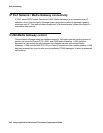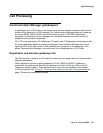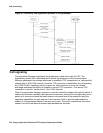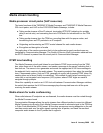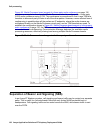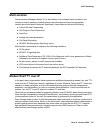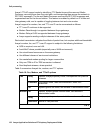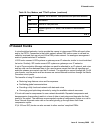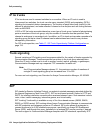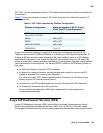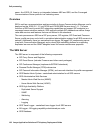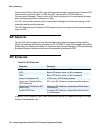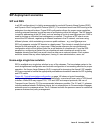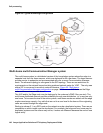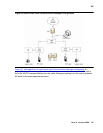
Call processing
134 Avaya Application Solutions IP Telephony Deployment Guide
IP tie trunks
IP tie trunks are used to connect switches to one another. When an IP trunk is used to
interconnect two switches, the trunk can also carry standard (QSIG) and proprietary (DCS+)
signaling for interswitch feature transparency. The location of each other node (switch) in the
network is administered, and node selection is based on the dial plan and call routing features
such as AAR/ARS.
H.323 or SIP tie trunks are administered as a new type of trunk group. Instead of administering
ports as members of the trunk group, only the number of channels must be specified. Each
channel is analogous to a member trunk. In addition, an IP tie trunk can be made a member of a
signaling group so that a virtual D-channel can be administered and used to carry feature
transparency information.
For SIP trunk capacities, see Table 17:
SIP Trunk Capacities by Platform Configuration on
page 135.
Trunk signaling
Several variations of IP signaling must be accommodated for the variety of trunks supported by
Communication Manager. These are specified as options in the trunk group administration.
When the IP trunk is used as a tie trunk to another vendor's switch, gateway, or gatekeeper,
Communication Manager sets up a separate TCP connection for each call.
Note:
Note: As of Communication Manager release 3.1, the maximum number of members of
a single IP trunk signaling group has increased from 31 to 255.
For more on trunk signaling, see Overview for Avaya Communication Manager, 03-300468.
SIP
SIP stands for Session Initiation Protocol, an endpoint-oriented messaging standard defined by
the Internet Engineering Task Force (IETF). SIP is a text-based protocol, similar to HTTP and
SMTP, for initiating interactive communication sessions between users. Such sessions include
voice, video, instant messaging, interactive games, and virtual reality.
SIP "trunking" functionality is available on any of the Linux-based servers (S8300, S8400,
S8500, or S8700-series). SIP trunking allows Avaya Communication Manager to communicate
with SIP endpoints and gateways across an IP network. SIP trunks allows an enterprise to
connect its server(s) to a SIP-enabled proxy server, specifically, an Avaya SIP-Enablement
Server (SES), and through this proxy, optionally to an external SIP service provider, if desired.
The trunk support in Communication Manager complies with SIP standards, specifically IETF



